ASTM G154
Standard Practice for Operating Fluorescent Ultraviolet (UV) Lamp Apparatus for Exposure of Non-Metallic Materials
ASTM G154 is an essential reference for assessing the resistance to ultraviolet (UV) and accelerated aging of non-metallic materials such as plastics, adhesives, and coatings. This document is a practice rather than a test method.
The distinction lies in the fact that ASTM G154 contains the performance requirements that an accelerated UV aging device with a fluorescent lamp must comply with. However, it doesn’t specify all the experimental parameters necessary to conduct a test. This “practice” serves as a basis for many standards related to accelerated weathering using fluorescent light sources to simulate the UV part of solar radiation at an accelerated rate.
Standards that reference ASTM G154 will define the type of lamps to use, the light intensity (irradiance), and other experimental parameters required for testing, such as humidity and temperature. In some cases, some of these parameters will always be missing, and their value will then be drawn from a specification for a specific application or product. Several standards refer to this method. For a list of these by-product categories, please visit our QUV testing standards.
Uses and Benefits of ASTM G154
ASTM G154 is used to assess the effects of UV exposure on a product’s mechanical properties. Unlike other methods such as ASTM G155, which offers xenon arc exposure, this technique isn’t widely used to validate colour changes over time. ASTM G154 is more commonly used to evaluate the loss of mechanical properties such as tensile strength, loss of plasticity, cracking, and hardness on plastics, adhesives and sealants, printing inks and coatings. It is also an effective solution for evaluating many finished products, including roofing materials and outdoor household products.
In addition to helping evaluate a product’s mechanical properties, the main benefits of using ASTM G154 are as follows:
- Consistent Testing Methodology: ASTM G154 provides a standardized approach to testing, ensuring consistency and reproducibility in results, which is vital for material analysis.
- Quality Assurance: Adhering to the ASTM G154 standard helps in maintaining a high level of quality and reliability in materials, especially those exposed to harsh environmental conditions.
- Product Development Insights: The testing can inform the development process by highlighting areas for improvement in material performance and durability.
- Regulatory Compliance: ASTM G154 testing is often necessary to meet specific industry regulations, ensuring products are compliant and market-ready.
- Customizable Test Conditions: The standard allows for adjustments in test conditions to simulate different environmental scenarios, providing flexibility for specific product testing needs.
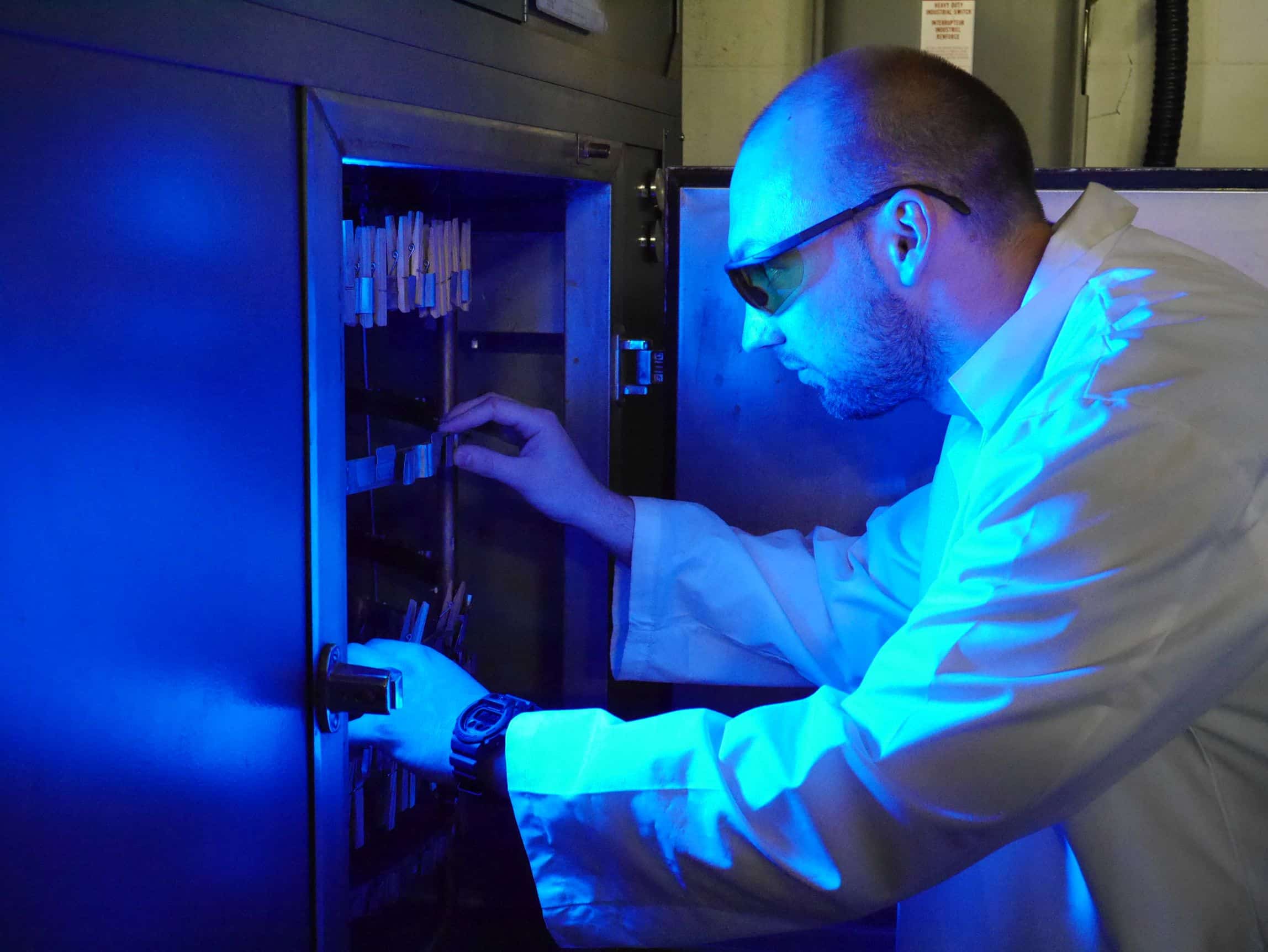
Practical Approach
The fluorescent light source required by ASTM G154 can bombard exposed samples in one of the following three UV radiation ranges: UV-A, UV-B, UV-C (see the chart below).
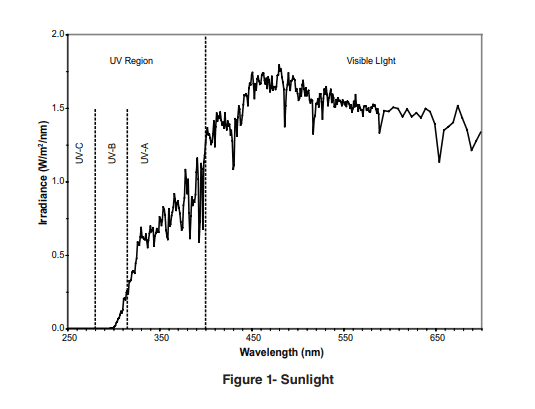
As the chart shows, solar radiation on the planet’s surface contains very little UV-B and no UV-C. However, some applications still require radiation in these bands. Therefore, it’s essential to be cautious and check with the experts in our materials testing laboratory if the required wavelengths of radiation are suitable for your specific application.
Sample preparation and evaluation of results are covered in practice ASTM G151 and ISO 4892-1 standards. More specific information on the property following exposure and how to produce the report is available in ISO 4582 standards.
Another document of interest is ASTM D4329, Standard Practice for UV Fluorescent Exposure of Plastics. By exposing samples under accelerated conditions, this method provides information about the future performance of products (loss of mechanical properties) that will be exposed in real-life environments. Furthermore, our services based on ASTM G154 comply with industry standards, reinforcing the credibility of your products in the market.
ASTM G154 Typical Experiment Parameters
To carry out an accelerated aging test that matches your application, the following test parameters must be defined:
- The type of fluorescent lamp
- The lamp’s irradiance level
- The type of moisture exposure
- The timing of the light and moisture exposure
- The temperature of light exposure
- The temperature of moisture exposure
- The timing of a light/dark cycle.
Choosing the appropriate parameters is essential to ensure meaningful results. There are predefined cycles that can be used in ASTM G154 tests. These cycles can be found in the table X2.1 of the test method.
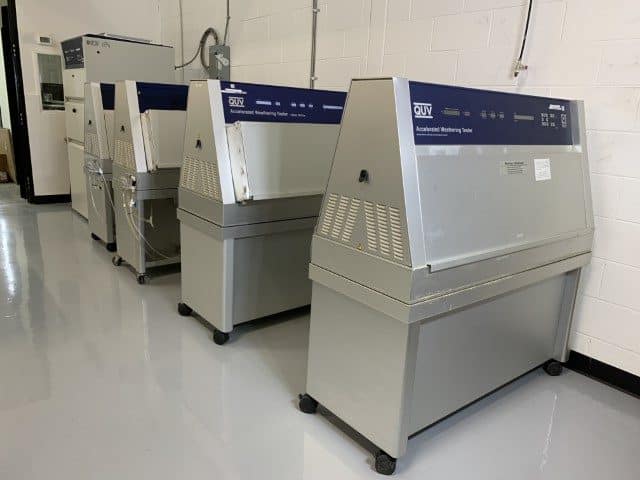
Customized Services for Optimal Results with ASTM G154
At Micom, we understand that every project is unique. Our team of experts is ready to guide you in choosing the parameters, conducting tests, and interpreting the results. We offer personalized support at every step of the process to ensure optimal results. Contact us for more information.
How to choose between ASTM G154 and ASTM G155 UV tests?
As an alternative to exposure to fluorescent light, we invite you to consider ASTM G155, which uses a different light source. Consult our decision tree below to better understand the differences between ASTM G154 and ASTM G155 UV testing and make an informed choice between the two. If you’re still not sure, our UV testing experts will be happy to help. For more information about alternative methods, please refer to our accelerated aging testing services.
Additional Resources and Next Steps
ASTM G154 is integral to various ASTM test methods, including ASTM D1248, ASTM D5208, and ASTM D5894, which incorporate QUV exposure along with ASTM G85 for cyclic corrosion testing. After materials undergo exposure to ASTM G154, a range of measures can be employed to assess the aging impact; consult ASTM testing and Coating Testing for more information on these follow-up approaches.
Take Action Today to Enhance the Reliability of Your Products
Are you ready to leverage ASTM G154 to improve the reliability of your products? Contact our team today to discuss your specific needs, get detailed information about our services, and plan your next steps toward more durable and high-performing products. You can also explore our complete range of testing services for coatings, painting, and polymers by downloading our brochure below.
Practical UV Testing Guide
Sunlight exposure can have harmful impacts on carbon-based
materials such as coatings, polymers, textiles, and many others.
Learn more about our in-laboratory UV testing process in this guide.


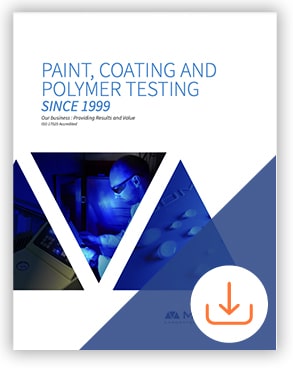
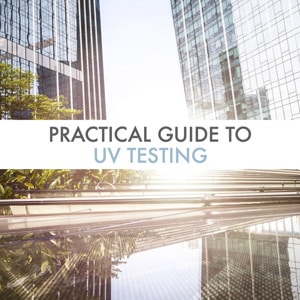
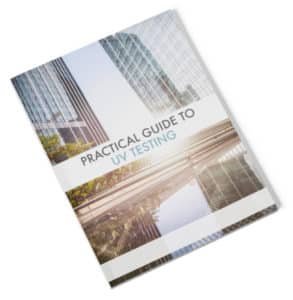 A free eBook to help you better safeguard your products from UV damage.
A free eBook to help you better safeguard your products from UV damage.